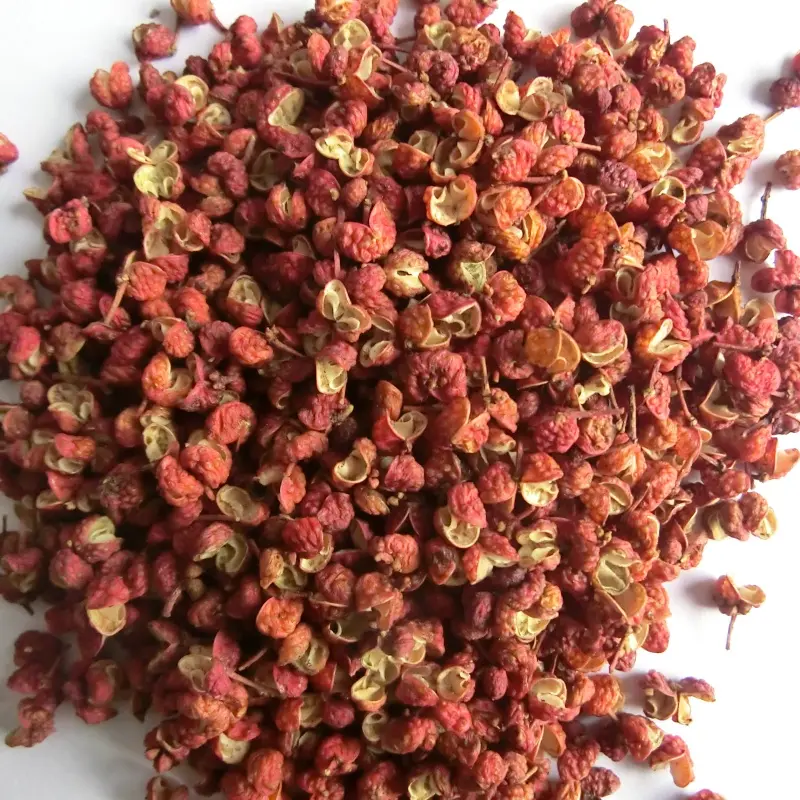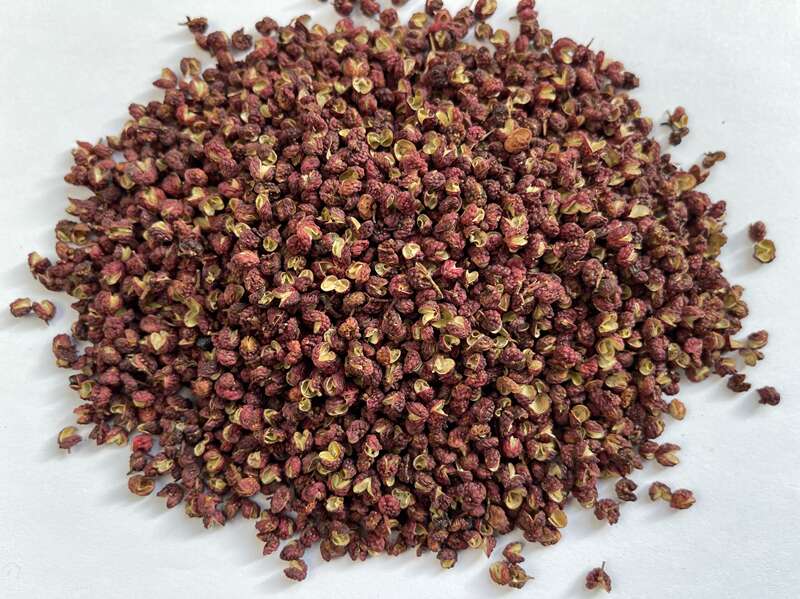Another name of Zanthoxylum bungeanum
Nicknames: pepper, pepper, large pepper, Qin pepper, Chuan pepper, Shu pepper, mountain pepper, large Sichuan pepper, point pepper, fragrant pepper, large Chinese prickly ash, green pepper, mountain pepper. Zanthoxylum bungeanum is also known as green Zanthoxylum bungeanum, dog Zanthoxylum bungeanum, Sichuan Zanthoxylum bungeanum, red Zanthoxylum bungeanum.
Zanthoxylum bungeanum var. pubescens Huang
Rutaceae Zanthoxylum
Zanthoxylum armatum dc
Rutaceae Zanthoxylum
Zanthoxylum simulans Hance
Rutaceae Zanthoxylum
Leaf prickle [synonym] Zanthoxylum armatum dc Zanthoxylum bungeanum
Sichuan Province, Guizhou Province, a specialty of pepper, also known as Prickly ash. The color of hemp pepper is lighter than that of common Chinese prickly ash, but its taste is better than that of common Chinese prickly ash.

Red sichuan pepper and green sichuan pepper.
Main components of Zanthoxylum bungeanum from different regions
The fruit of Zanthoxylum bungeanum contains 0.7% (produced in Guizhou), 2 ~ 4% (produced in Gansu) and 4 ~ 9% (produced in Guangdong). The volatile oil contains geraniol, limonene, cumol, etc. The fruit also contains sterols, unsaturated organic acids, etc.
The main components of the volatile oil in Zanthoxylum bungeanum peel were limonene (25.10%), 1,8-cineole (21.79%), myrcene (11.99%), and A-and β- Pinene, sabinene, β- Carylene( β- phellandrene), β- Basilene-x( β- Oximine-x), p-cymene, α- Terpinene( α- Terpinene), perillene, linalool, ter-pinen-4-ol, estragole, α- A-terpineol, trans caryophyllene, Terpinyl Acetate, humulene, neryl acetate, β- Piperone( β- Cadinene), geranyl acetate, neroklidol isomer, etc. The peel also contains kokusagine, skimmianine, haplopine, 2 '- hydroxy-n-isobutyl - (2e, 6e, 8e, 10e) -dodecatatraenamide, and Schinifoline is n-methyl-2-heptyl-4-quinolinone, herniarin, N-nonacosane.
In the volatile oil of Zanthoxylum bungeanum fruit, 4-terpineol accounts for 13.46%, Piperitone accounts for 10.64%, linalool accounts for 9.10%, sabinene accounts for 9.7%, limonene accounts for 7.30%, o-cymene accounts for 7.00%, myrcene accounts for 3.00%, and α- and β- Pinene, α- Terpineol, etc.
In the volatile oil of Zanthoxylum bungeanum seeds, linalool accounts for 18.5%, laurene accounts for 10.2%, tert butylbenzene accounts for 11.8%, and sabinene, a-pinene, limonene, 1,3,3-trimethyl-2-oxabicyclclo (2.2.2) octane, terpineol, peppermint ketone, (E) -3-isopropyl-6-oxo-2-heptanal ((E) -3-isopropyl-6-oxo-2-heptenal), (E) -8-methyl-5-isopropyl-6, 8-nonadiene-2-one ((E) -8-methyl-5isopropyl-6,8-nonadiene-2-one), 4- (2,2-dimethyl-6-methylene cyclohexyl) - 3-butene-2-one [4- (2,2-dimethyl-6-methylenecyclohexyl) - 3-buten-2-one), α- Hydroxy-4,6-dimethoxyacetophenone( α- Hydroxy-4,6-dimethoxyacetophenone), 1,1-dimethyl-4,4-diallyl-5-oxo-2-cycloethylene, β- Ancient rutene( β- Gurjunene), Longifolene, α- Farnesene( α- farnesene), γ- Piperone( γ- Cadinene), clovene.
The fruit of pepper seed (produced in Northeast China) contains acorn and bergamot lactone. The main component of volatile oil in fruit is AI Cao Nao, accounting for about 90%. The peel contains Bergamot lactone and benzoic acid.
The dried pericarp (also known as red Zanthoxylum bungeanum, red pepper, Dahongpao) is cracked on the ventral surface or slightly cracked on the back, in the shape of two petals, like a cut ball, and connected at the base, with a diameter of 4 ~ 5 mm; The surface is reddish purple to reddish brown, rough, with stigma residue at the top. There are often small fruit stalks and 1 ~ 2 undeveloped carpels at the base, which are granular. Occasionally, there are 2 ~ 3 small follicles at the tip of the fruit stalks. The epicarp surface is extremely shrunk, and many warty oil glands with a diameter of 0.5 ~ 1 mm can be seen; Endocarp smooth, pale yellow, often separated from the base and epicarp and turned inward. Sometimes residual black seeds can be seen. The peel is leathery and has a special strong aroma. The taste is spicy and lasting. It is better to have bright red, bright, thin, uniform skin and no impurities.
Main effects of Zanthoxylum bungeanum
It can warm the middle and disperse the cold, dehumidify, relieve pain, kill insects, and detoxify fishy poison. It can cure accumulated food and drink, abdominal cold pain, vomiting, eh, cough, dyspnea, wind cold dampness arthralgia, diarrhea, dysentery, colic, tooth pain, Ascaris, pinworm disease, Yin itching, and scabies.
According to the Scripture, "the wind is the main evil Qi. It is warm, removes cold arthralgia, strengthens the teeth and hair, and brightens the eyes." "The main evil Qi coughs inversely, warms the middle, kills the muscle by the bone joint skin, the cold dampness arthralgia pain, the lower Qi."
"Bielu": "it can cure throat obstruction, vomiting, hernia, bleeding, postnatal abdominal pain, sweating, and benefit the five internal organs." "In addition to the cold in the six viscera, typhoid fever, mild malaria, strong wind and no sweat, drinking in the heart, eating in the night, diarrhea in the intestines, ejaculation, women's word milk and other diseases, dispersing wind evil knot, edema, jaundice, insecticidal fish poison. It can be used as a plaster to open the bowels, dredge blood vessels, strengthen teeth and hair, regulate joints, and resist cold and heat."
"Theory of medicinal properties": "it can cure the evil wind, stubborn arthralgia in all limbs, swelling and shaking of mouth and teeth; it can cure the postpartum dysentery due to the closure of the moon; it can cure the postpartum dysentery due to dysentery for many years, and it can cure the cold pain in the abdomen." "It can cure the head wind, tears, waist and foot failure, virtual damage, knot retention, broken blood, stones and water, cold and painful abdomen, and tooth pain."
"Dietotherapy Materia Medica": "eliminate the blemishes and add milk."
"Rihuazi Materia Medica": "breaking the crux, appetizing, curing the disease of seasonal Qi temperature, postpartum blood retention, curing the heart and stomach qi, strengthening yang, curing Yin sweat, warming the waist and knees, and shrinking the stool."
"Compendium": "dispel cold and dehumidification, relieve stagnation, eliminate overnight food, dredge the triple energizer, warm the spleen and stomach, supplement the vital gate of the right kidney, kill Ascaris and stop diarrhea.
How to eat pepper leaves?
1. Chinese prickly ash leaves can be used to cook soup, stir fry vegetables, deep fry, and mix flour paste to make cakes. No matter how you do it, you hardly need any ingredients, because it is fragrant enough. It is one way to chop pepper leaves, add a little salt, water and flour to make a thin batter, and pan fry them into pancakes.
2. The second method is to chop up pepper leaves, mix salt and eggs into egg paste, and pan fry into egg cakes. No need to fry them. Scrambled eggs are also good.
3. Cut the pepper leaves short, cut the beef (tenderloin) into thick shreds, add water, soy sauce, cooking wine and cornflour, add vegetable oil, add a trace of baking soda, stir fry in oil pan, which is the third most delicious method.
4. Pepper leaves can be like mint leaves, fried with fried beef; Or a little large pepper leaves wrapped in flour and fried; You can also squeeze and wrap pepper dumplings. Pepper leaves can also be boiled and boiled and eaten cold.
5. Zongzi with pepper leaves
Wash the leaves of fresh and tender Chinese prickly ash and squeeze them into juice. Mix them with glutinous rice and wrap them into zongzi. They have a faint fragrance and taste delicious.
6. Pepper leaf pancake
It is also very delicious to chop the leaves of Chinese prickly ash, add a little salt, a proper amount of flour and water, mix them into a thin batter, and fry them into pancakes in a pan.
7. Egg cake with pepper leaves
Chop the pepper leaves, add salt and eggs to break them up, transfer them into egg paste, fry them into egg cakes in a pan, or fry them until they are cooked.
8. Fried beef with pepper leaves
Cut beef tenderloin into thick shreds, add raw soy sauce, cooking wine and a little raw flour, add vegetable oil, add a trace of baking soda, put it into the pot until smooth, sprinkle it with chopped pepper leaves, add salt, stir well, and start the pot.
FAQ
What is Zanthoxylum bungeanum?
Zanthoxylum bungeanum, commonly known as Chinese prickly ash or Sichuan peppercorn, is a shrub native to China. It is renowned for its culinary uses, adding a unique flavor to dishes, and is also valued in traditional Chinese medicine.
How is Zanthoxylum bungeanum used in cooking?
The dried berries of Zanthoxylum bungeanum, known as peppercorns, are a key ingredient in Chinese cuisine, particularly in the Sichuan province. They are used to impart a distinct citrusy flavor and a tingling, numbing sensation to various dishes.
What are the medicinal properties of Zanthoxylum bungeanum?
Zanthoxylum bungeanum has been traditionally used in Chinese medicine for its potential digestive benefits, anti-inflammatory and analgesic effects, antimicrobial properties, and possible circulatory support.
How is Zanthoxylum bungeanum prepared for medicinal use?
The dried berries of Zanthoxylum bungeanum can be used to prepare decoctions or infusions for medicinal purposes. The essential oil derived from the plant is also utilized in certain applications.
Is Zanthoxylum bungeanum safe for consumption?
Generally, Zanthoxylum bungeanum is safe for consumption in culinary amounts. However, individuals with specific health conditions or those taking medications should consult with healthcare professionals before using it for medicinal purposes.
What is the flavor profile of Zanthoxylum bungeanum?
Zanthoxylum bungeanum imparts a unique flavor that combines citrusy notes with a tingling, numbing sensation. It is a defining element in the bold and complex flavors of Sichuan cuisine.
Can Zanthoxylum bungeanum be used topically?
Yes, the essential oil derived from Zanthoxylum bungeanum can be used topically for certain applications. However, it should be properly diluted, and a patch test is advisable to ensure skin compatibility.
What precautions should be taken when using Zanthoxylum bungeanum?
Individuals with known allergies or sensitivities should exercise caution. Pregnant or breastfeeding individuals and those with specific health conditions should consult healthcare professionals before incorporating Zanthoxylum bungeanum into their diet or wellness routine.
Where can Zanthoxylum bungeanum be obtained?
Zanthoxylum bungeanum products, including dried berries and essential oil, can often be found in herbal or specialty food stores. You can also order from our website.
Can Zanthoxylum bungeanum be grown at home?
Zanthoxylum bungeanum can be cultivated, but it requires specific conditions such as well-drained soil and a temperate climate. It is advisable to research and understand the plant's cultivation needs before attempting to grow it at home.
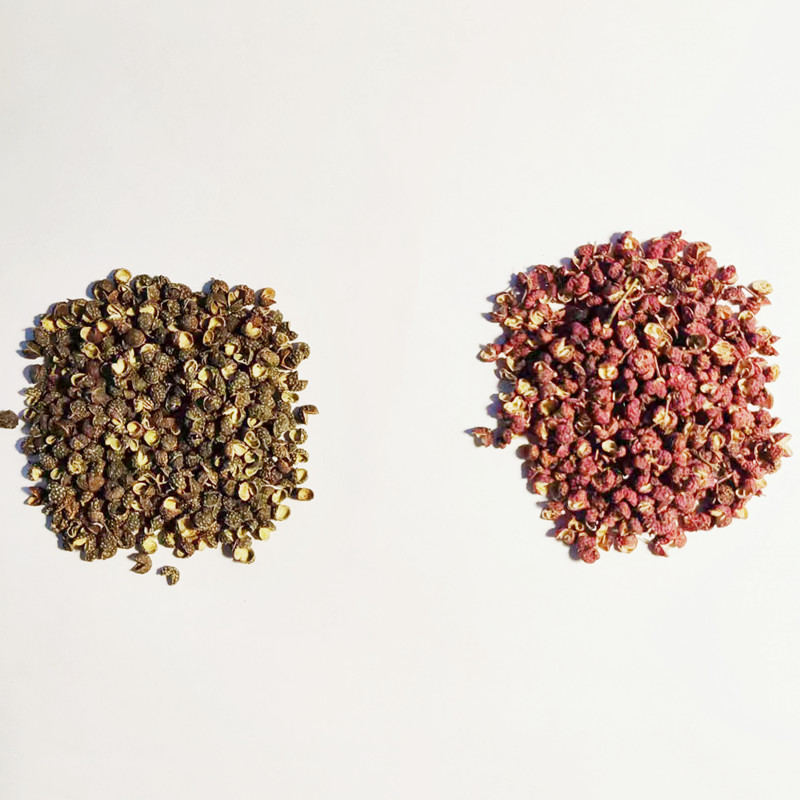
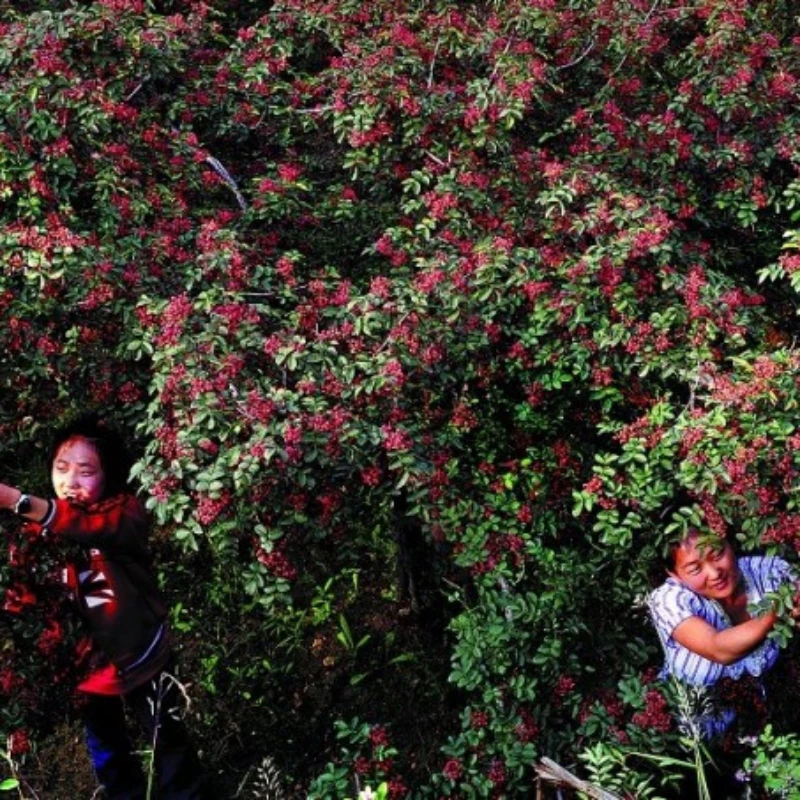

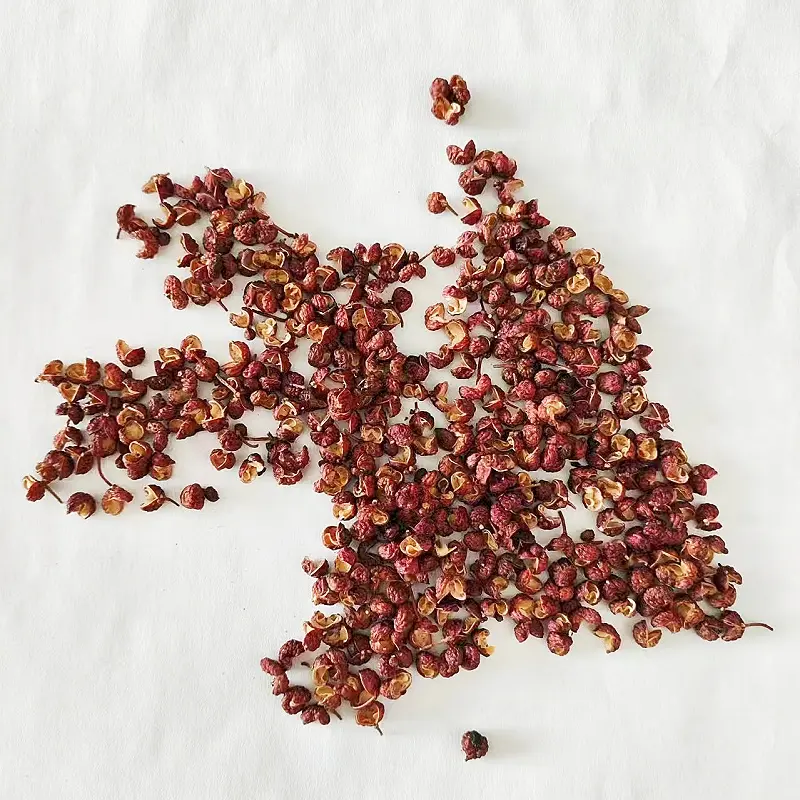
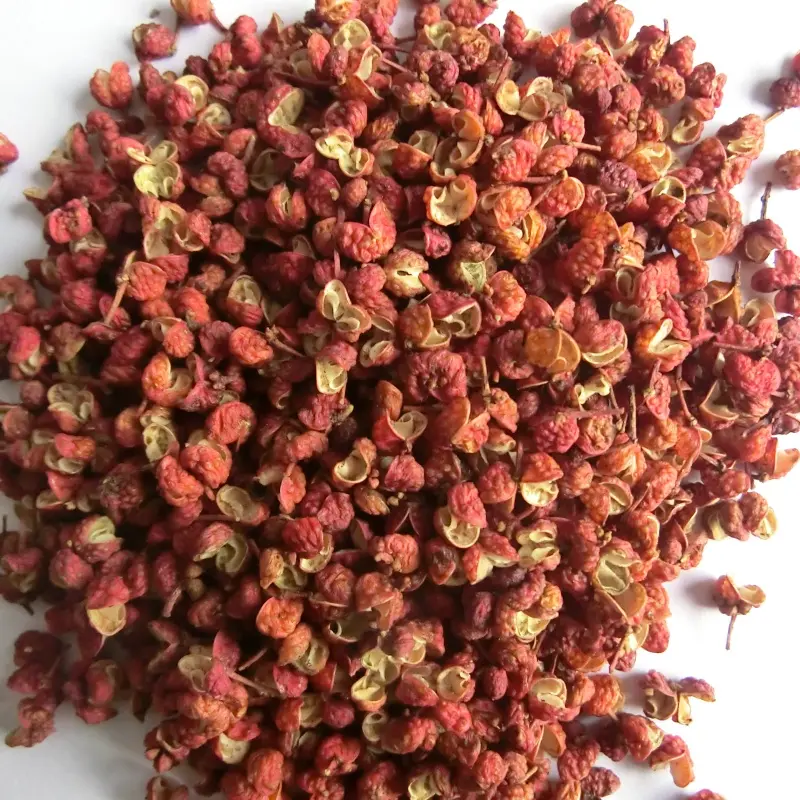
811.webp)

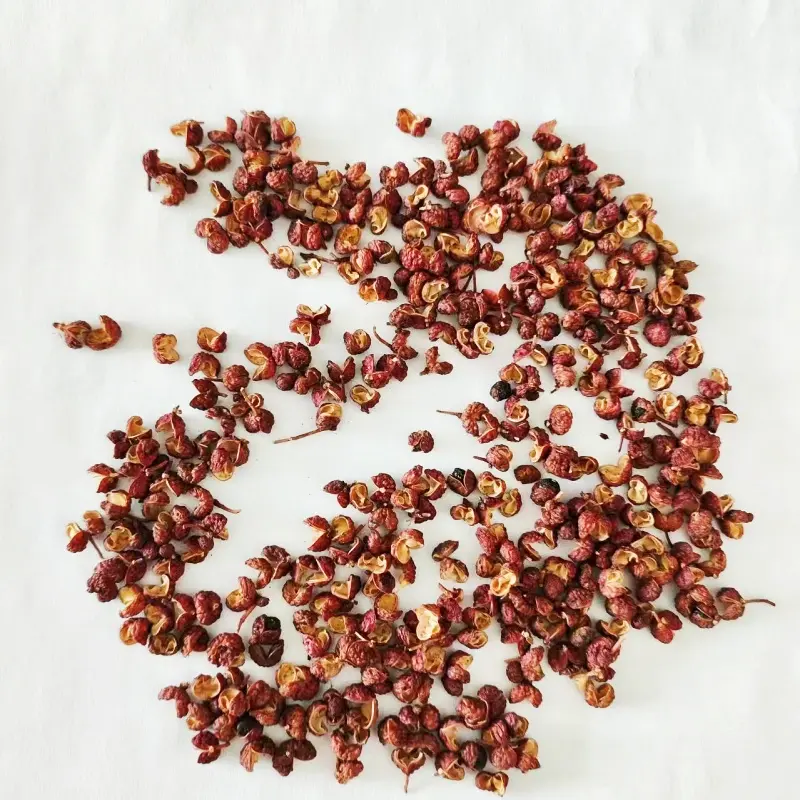
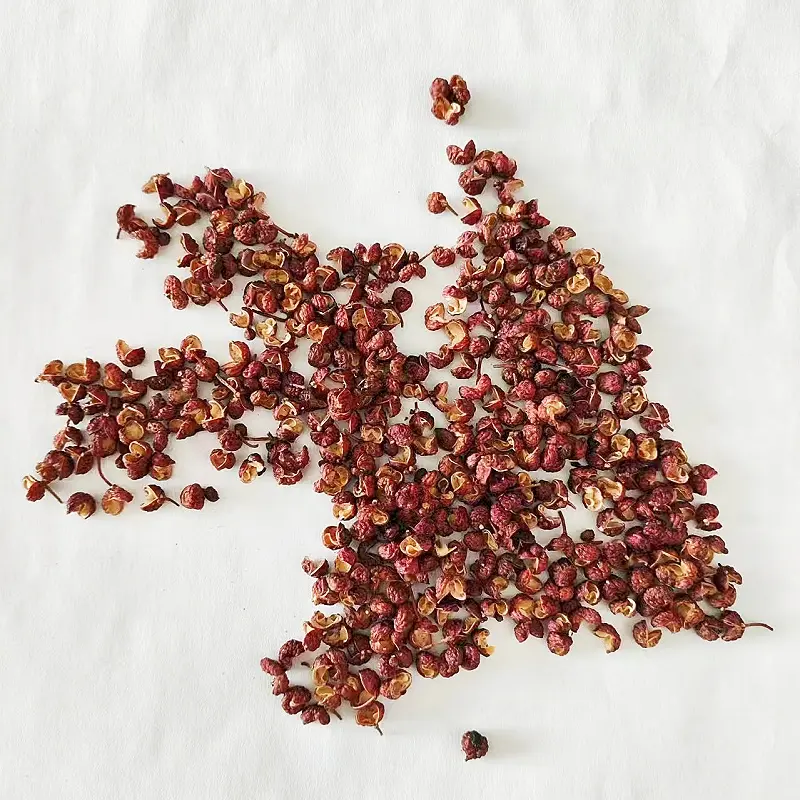
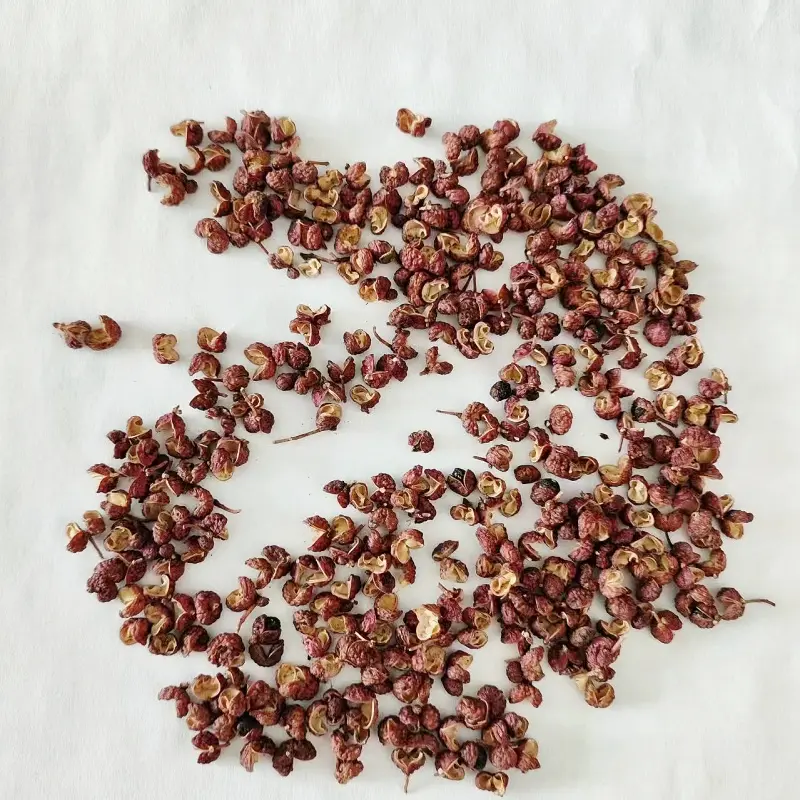
114.webp)
